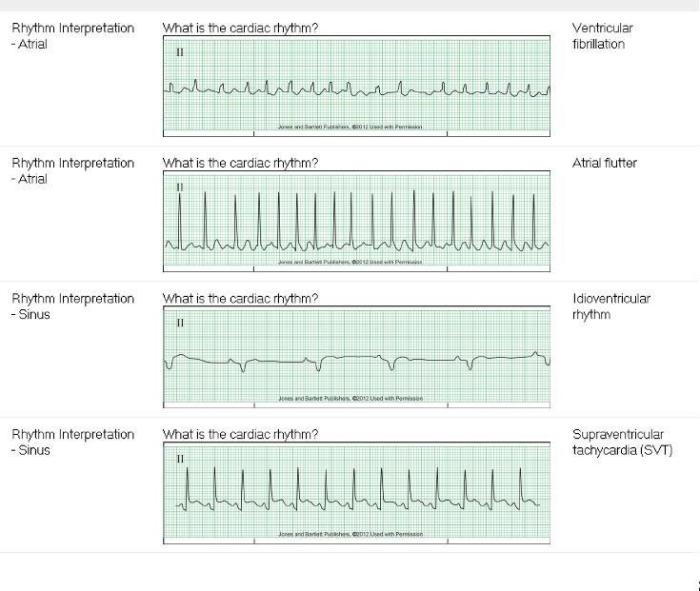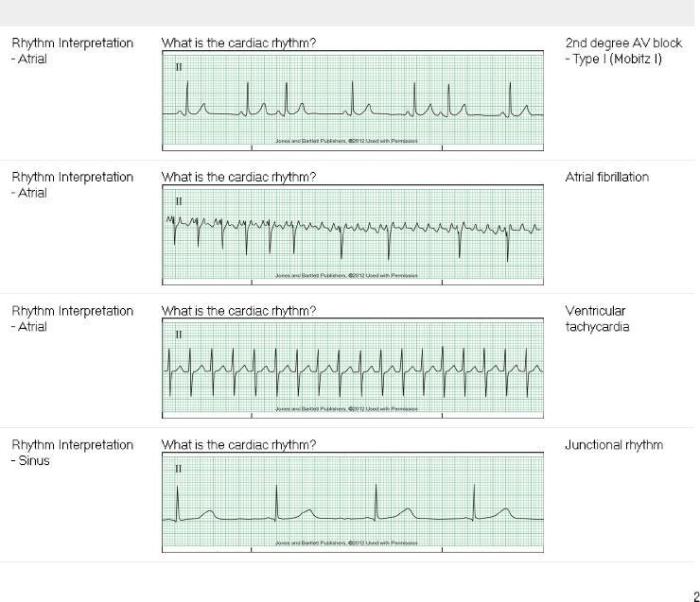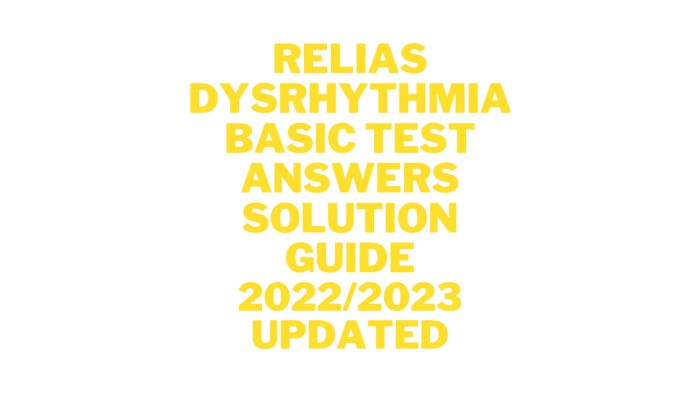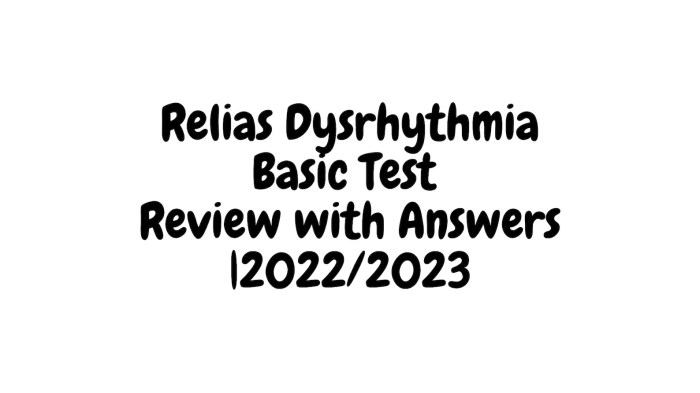Embark on a comprehensive exploration of dysrhythmias with the Relias Dysrhythmia Basic A Test Answers. This authoritative guide unveils the intricacies of heart rhythm disturbances, empowering you with a profound understanding of their recognition and management.
Prepare yourself for the Relias Dysrhythmia Basic A Test with expert insights into its structure, content, and effective preparation strategies. Delve into the test’s intricacies, unraveling the types of dysrhythmias it encompasses and the key concepts it emphasizes.
1. Dysrhythmia Basics: Relias Dysrhythmia Basic A Test Answers

Dysrhythmias are abnormalities in the heart’s electrical system that can affect its rhythm and function. They can range from minor variations in heart rate to life-threatening conditions.
Characteristics of Dysrhythmias
- Irregular heart rate or rhythm
- Rapid heart rate (tachycardia)
- Slow heart rate (bradycardia)
- Abnormal heartbeats (extra beats, skipped beats)
Common Dysrhythmias and Causes
- Sinus tachycardia:Rapid heart rate caused by stress, exercise, or fever
- Atrial fibrillation:Irregular heart rhythm caused by abnormal electrical impulses in the atria
- Ventricular tachycardia:Rapid heart rhythm originating in the ventricles
- Bradycardia:Slow heart rate caused by damage to the heart’s electrical system or medications
Significance of Dysrhythmias
Dysrhythmias can lead to various complications, including:
- Reduced cardiac output
- Heart failure
- Stroke
- Sudden cardiac arrest
2. Relias Dysrhythmia Basic A Test

Purpose and Scope
The Relias Dysrhythmia Basic A Test is an assessment tool designed to evaluate healthcare professionals’ knowledge and skills in recognizing and managing dysrhythmias.
Structure and Format
The test consists of 50 multiple-choice questions that cover a range of dysrhythmia topics.
Preparation Tips
- Review the basics of dysrhythmias
- Practice interpreting ECGs
- Understand the principles of dysrhythmia management
- Take practice tests
3. Test Content Analysis

| Section | Topics |
|---|---|
| ECG Interpretation | ECG waveforms, dysrhythmia identification |
| Dysrhythmia Classification | Supraventricular and ventricular dysrhythmias |
| Dysrhythmia Management | Pharmacological and non-pharmacological interventions |
| Special Dysrhythmias | Pacemaker-mediated dysrhythmias, pediatric dysrhythmias |
Types of Dysrhythmias Covered
- Sinus tachycardia
- Atrial fibrillation
- Ventricular tachycardia
- Bradycardia
- Asystole
- Pacemaker-mediated dysrhythmias
Specific Concepts and Techniques
- ECG interpretation techniques
- Dysrhythmia algorithms
- Medication administration for dysrhythmias
- Non-invasive dysrhythmia management
4. Test Question Examples
Question:
Which of the following ECG findings is characteristic of sinus tachycardia?
Answer:
Regular, narrow QRS complexes with a rate >100 bpm
Rationale:, Relias dysrhythmia basic a test answers
Sinus tachycardia is characterized by a regular, rapid heart rate with normal QRS morphology.
Question:
What is the most common cause of atrial fibrillation?
Answer:
Unknown (idiopathic)
Rationale:, Relias dysrhythmia basic a test answers
In many cases, the cause of atrial fibrillation is unknown.
Question:
Which medication is commonly used to treat ventricular tachycardia?
Answer:
Amiodarone
Rationale:, Relias dysrhythmia basic a test answers
Amiodarone is an antiarrhythmic drug that is effective in treating ventricular tachycardia.
5. Advanced Preparation Strategies

Techniques for Studying Dysrhythmias
- ECG simulation software
- Online dysrhythmia interpretation tools
- Interactive dysrhythmia case studies
Resources for Further Learning
- Heart Rhythm Society (HRS) website
- American Heart Association (AHA) guidelines
- Dysrhythmia interpretation textbooks
Critical Thinking Skills for Dysrhythmia Analysis
- Ability to interpret ECGs accurately
- Understanding of dysrhythmia pathophysiology
- Knowledge of treatment options and their indications
- Ability to differentiate between benign and life-threatening dysrhythmias
Essential FAQs
What is the significance of dysrhythmia recognition?
Early recognition of dysrhythmias is crucial for prompt intervention and prevention of adverse cardiovascular events.
How can I effectively prepare for the Relias Dysrhythmia Basic A Test?
Thoroughly review dysrhythmia concepts, practice EKG interpretation, and utilize study materials provided by Relias.
What specific dysrhythmia types are covered in the test?
The test encompasses a wide range of dysrhythmias, including sinus arrhythmia, atrial fibrillation, ventricular tachycardia, and more.

